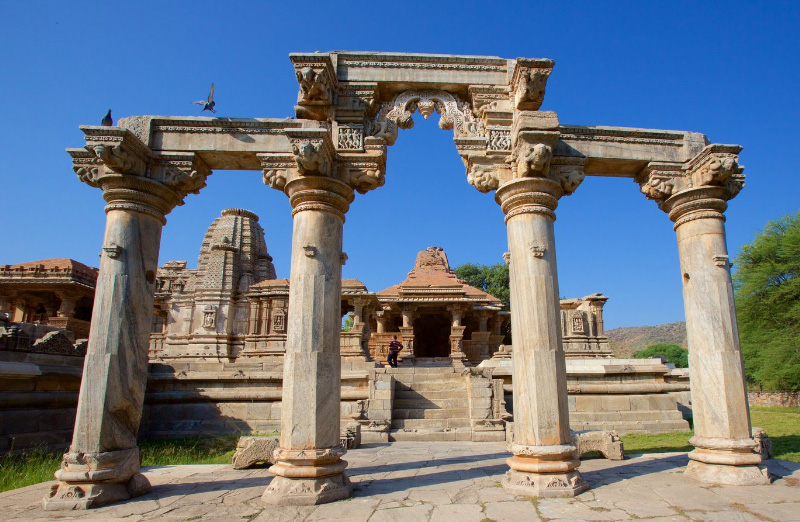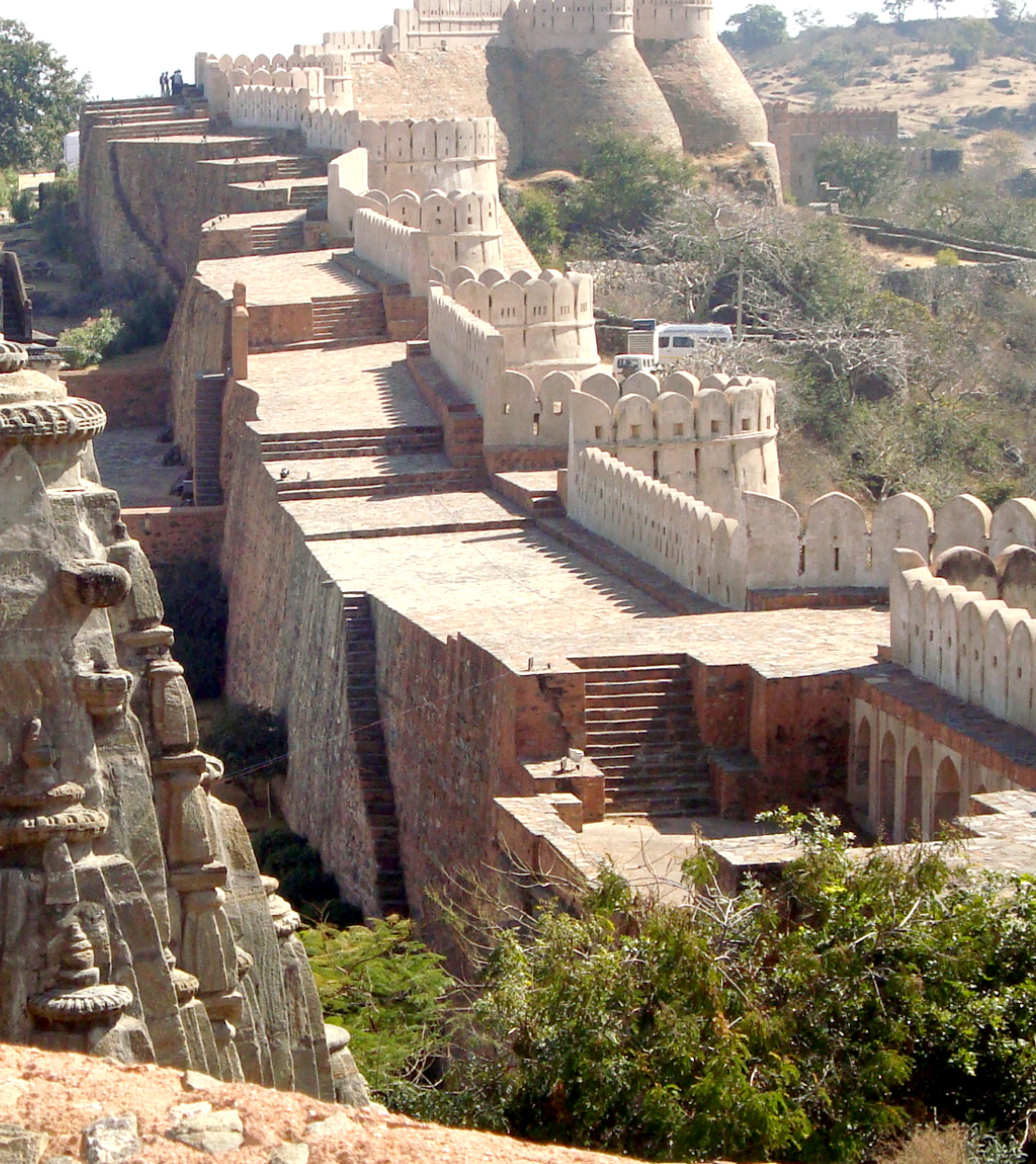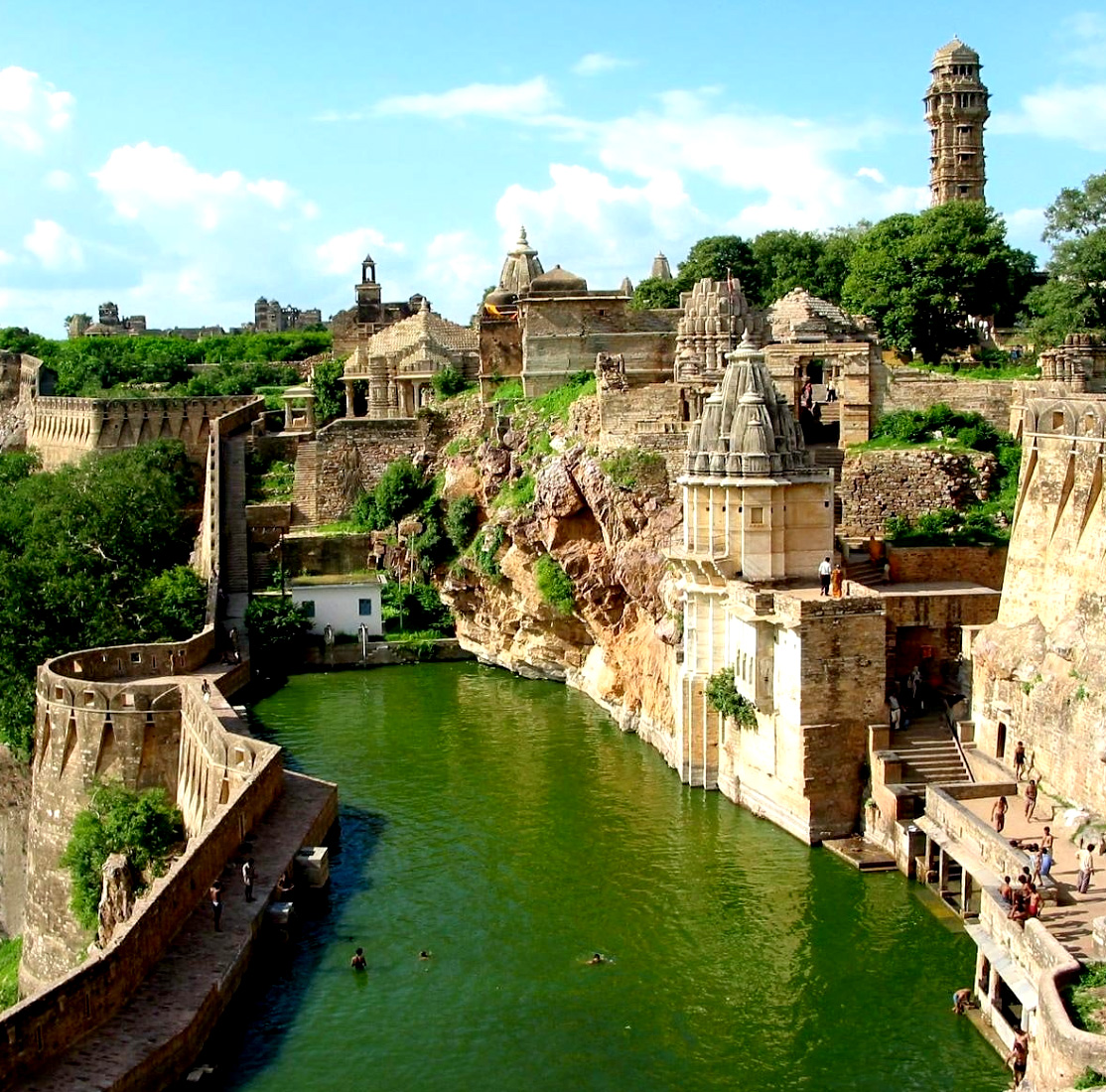
Aareman Travels offer Udaipur Excursion tours that covers Eklingji, Nagda, Nathdwara, Ranakpur, Kumbhalgarh, Chittorgarh. Udaipur excursion tours are divided in three different sectors which are
Sector A :: Eklingji, Nagda & Nathdwara
Sector B :: Ranakpur and Kumbhalgarh
Sector C :: Chittorgarh
Please check the below details.
The Ekling Ji Temple is a stunning complex various temples in Kailashpuri a small village located just 22 kms in the north of Udaipur. This temple is dedicated to Lord Shiva and was built by Bappa Rawal in 734 A.D. The magnificent architecture of Eklingnath Temple is simply remarkable. The double-storied temple looks awesome with its pyramidal style of roof and distinctly carved tower. The outer walls of the temple are stretched with steps that descend touching the serene waters. Inside the complex, the main temple is a huge pillared hall or 'mandap' that is sheltered by hefty pyramidal roof. There are so many small shrines in the complex, the major temples are of Lord Shiva, Goddess Amba etc.


Nagada is a small town famous for the Sas- Bahu Temples, located on the banks of Bagela Lake just 23 Kms in the north-west of Udaipur. In the 6th century, Nagda was found by Nagaditya, the fourth Mewar King. Initially it was known as Nagahrida and served as the capital of Mewar. The complex has the few small & big temples and the ruins. There was statue of Lord Vishnu with 100 hands which mean "sahastra bahu" later this name converted to Sas-Bahu Temple.
Nathdwara is a city in Rajasthan state of western India. It is located in the Aravalli hills[1], on the banks of the Banas River in Rajsamand District, just north of Udaipur. This holy town is famous for its temple of Krishna which houses the Shrinathji, a 12th century "infant" incarnation idol (murti) of Krishna. The idol was moved in the 17th century from Govardhan hill, near Mathura along holy river Yamuna, to protect it from the Mughal emperor Aurangzeb's campaign against Hindu worship in his empire. Nathdwara, means the gate of God. It is the most renowned pilgrim of India. Nathdwara is located on the banks of Benas river just 48 kms ahead of Udaipur. Nathdwara is also famous for the Pichhwai paintings - the most famous Rajasthani art. This art portrays the Lord Shrinathji & their activities .


Ranakpur is located in the mountain ranges of Pali district, 23 kms. away from the Phalna railway station. Ranakpur is reached after passing lush green valleys and streams and the heart capturing views drive away any fatigue of the journey. The Ranakpur Jain Temple were built during the reign of the liberal and gifted monarch Rana Kumbha in the 15th century. An enormous basement covers 48,000 sq. feet area. There are four subsidiary shrines, twenty four pillared halls and eligibly domes supported by over four hundred columns. Ranakpur is mainly famous for the Ranakpur Jain Temple. Ranakpur is a village located in Desuri tehsil near Sadri town in the Pali district of Rajasthan in western India. It is located between Jodhpur and Udaipur, in a valley on the western side of the Aravalli Range. Ranakpur is easily accessed by road from Udaipur. Ranakpur is widely known for its marble Jain temple, and for a much older Sun Temple which lies opposite the former.
Kumbhalgarh is world famous for the Grand exotic Kumbhalgarh Fort. The fort has a rock solid architecture and that is why it is the only unbeaten fort in Rajasthan. Kumbhalgarh (also called Kumbhalmer or Kumbalgarh) is a Mewar fortress in the Rajsamand District of Rajasthan state in western India. Built during the course of the 15th century CE by Rana Kumbha, and enlarged through the 1800s, Kumbhalgarh is also a birthplace of Maharana Pratap, the great king and warrior of Mewar. Occupied till the nineteenth century, the fort is now open to the general public as a museum and is spectacularly lit for a few minutes each evening. Kumbalgarh is situated 82 km from Udaipur towards its northwest and is easily accessible by road. This fort was virtually inaccessible in the 15th century. Rana Kumbha of Mewar designed this fort. He designed this great defensive fort on a hill, which was situated at a height of 3,500 feet above the earth's surface, which is approximately 1100 meters high. Ano her reason why people visit Kumbhalgarh is the wild life sanctuary, which covers an area of about 57778sq Km and is an abode to a huge variety of wildlife as well as several exotic birds. It is the most important fort in Mewar after Chittorgarh.


Chittorgarh is yet another exotic fort of Rajasthan. It is situated 175 km to the east of Udaipur and is named after Chitrangad Maurya. Bappa Rawal, founder of the Sisodia dynasty, received Chittor as dowry from last the princess of the Solanki dynasty in mid-8th century AD. It covers an area seven mile covering 700 acres of land with its fortifications, palaces, temples and towers. The Chittorgarh fort stands on a 180 m high hill that rises rapidly from the plains below. It is a massive structure with a 1 km zigzag accent to it. The road leads through seven gates namely Padan Pol, Bhairon Pol, Hanuman Pol, Ganesh Pol, Jorla Pol, Lakshman Pol, to the main gate Rampol. The main gate of the fort is called the Surajpol meaning the Gate of Sun. There are many palaces within the fort like the Rana Kumbha Palace, the Fateh Prakash Palace, the Tower of Victory and Rani Padmini's Palace, which are significant for their Rajput architectural features. The fortress of Chittorgarh epitomizes the romance and chivalry of the Rajput tradition.